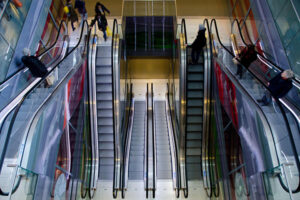By Manuel Jahn
The success of store retail traditionally hinges on the location, which includes the surrounding neighborhood and street as well as the actual building. But the cutting edge of the international retail real estate market now features locations and concepts that creatively rethink these conventional elements. These new retail venues and concepts offer consumers an integrated experience that combines shopping, entertainment, and gastronomy. Various factors are behind this emerging trend.
Traditional retail revolves around meeting consumers’ concrete goals, such as their desire for a specific product or the lowest price. By contrast, the new phenomenon of “experience shopping” shifts the focus to meeting consumers’ desire for a variety of intangible qualities. Some of these include consumers’ desire for retail venues to offer meeting point functions, opportunities to express social, political or cultural interests through visiting these locations and purchasing certain products and an atmosphere that promotes inspiration and well-being. Understood in this way, shopping is an expression and extension of consumers’ lifestyles. The leading branches of Germany’s retail scene—fashion and lifestyle retailers—are especially impacted by these rising consumer expectations.
As in the home and office submarkets, the demand for innovative retail concepts increasingly focuses on mixed, concentrated, and highly frequented surroundings where retail can profit from a variety of other location uses and meanings. The combination of these location characteristics offers consumers added value that goes beyond the conventional shopping outing. In this so-called “experience economy,” retail transcends a merely material focus and attempts to evoke and respond to consumers’ feelings, lifestyle orientations, and experiences. Stores that embrace this trend thus bring together material and non-material qualities and retailers use the stores’ surroundings as a staging area for integrating the shopping experience with consumers’ daily lives.
Given this trend, future-oriented retailers and concepts require new locations that rethink the traditional categories (A vs. B locations, city center vs. greenfield area, etc.). These new locations more effectively respond to consumers’ desire to connect the shopping experience with art, culture, and entertainment options.
Offering these kinds of integrated locations will become an urgent question because much of the additional demand has up to now been absorbed by city-center shopping centers. Our experience with international client projects has shown that this demand for mixed, usage-flexible, and highly concentrated areas for retail (including sites outside of city centers) is only in the beginning phases. Those involved with retail and real estate as well as public authorities are well-advised to consider these new retail demands when planning neighborhoods, streets, and buildings. Well-conceived usage concepts and development plans are necessary to meet the demand for future-oriented retail spaces while also avoiding vacancy risks.
Consumer and retailer demands for mixed environments, interconnected usages, and greater flexibility require new or, at the very least, reimagined real estate objects and locations. Far from a mere passing trend, these emerging retail requirements represent an enduring shift in consumer expectations regarding their lifestyles, daily routines, and recreational activities.
What is your opinion on this topic? Discuss it with us! Send your opinion to opinion@across-magazine.com !







